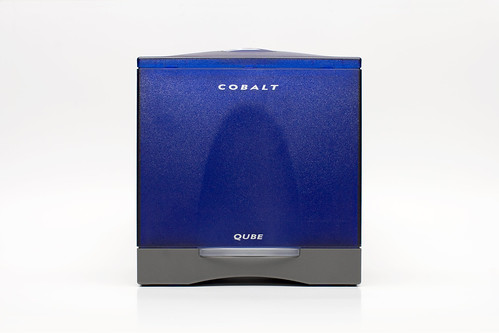7 minutes estimated reading time
I guess where I should start this post in OSS is by going back. This time 20 years ago, we were in a time of economic irrational exuberance so large as to be like a fairy tale in comparison to Brexit and the coronavirus.
Irrational exuberance
Everyone believed that the future was going to be rebuilding the catalogue shopping business online. Consumers would have a raft of choice.
Advertisers were going to swap print and TV advertising for banner ads. Something that looked like small advertisements on the pages of newspapers at the time. Because of this, online display advertising was over-priced and everyone was happy.
In order to do these businesses, you needed a lot of servers and a lot of software. If you had the money you bought really good software and servers from Silicon Valley. Companies like Sun Microsystems, Silicon Graphics or Digital Equipment Corporation. These all ran variants of the Unix operating system.
If you were less fortunate you might be running on an Intel server running Windows NT, anything by IBM or repurposing a Mac from the design studio. The Mac made a surprisingly robust server solution mainly because the computer was so ‘dumb’. There wasn’t a lot that hackers could do to it at the time.
True hackers
People who were hackers in the truest sense realised that you didn’t have to pay for software to run on servers. If you knew where to go and had the right technical chops, you could have robust server software. You could end up paying good money to Microsoft and still need to use three times the amount of servers for a given load because Windows didn’t handle multiple threads as well. It couldn’t do as much ‘work’ as free software. You would get even more benefit if you were skilled enough to see how you could tweak it to meet your needs. Online communities also meant that you would find fellow travellers interested in similar tweaks and would collaborate with you.
A classic example of this would be Hotmail. Hotmail was founded on NetBSD servers and it took years for Microsoft to migrate away from it due to performance and scaling issues with Microsoft’s own software.
Yahoo! which used and contributed to various OSS projects including:
- Debian Linux and later moved to an adapted version of Red Hat Linux
- FreeBSD
- PHP
A peer of Yahoo!’s founders David Filo and Jerry Yang, decided to make hacking together servers and web services easier for businesses and technologists. The founder was called Larry Augustin and the company he founded was VA Linux. VA Linux built workstations and servers for websites. VA Linux is now most famous for the largest opening day price increase on the NASDAQ; but they made seem really great computers.
For smaller businesses, a small start-up called Cobalt Networks came up with a relatively friendly server that could sit in the corner of an office called the Qube. This was popular in a number design offices as a file server and also ran numerous websites. As well as the cute form-factor, it made OSS more approachable for a lot of businesses and changed expectations about IT complexity.
I was working on a mix of telecoms, enterprise and consumer technology clients. One of my clients . By the time I was working with VA Linux in April 2000, open source software (OSS) was a hot ticket. And both Cobalt Networks and VA Linux were at the forefront.
At this time OSS, in particular the Linux operating system was endorsed by IBM with a $1 billion investment in the community. This helped adoption by other large business technology companies including Oracle, SAP and Sun Microsystems.
Suddenly it was OSS everywhere. My client Palm was trying to move its photo-smartphone operating system to Linux underpinnings.
Where was Microsoft in all this?
Its hard to explain to someone under 30 how dominant Microsoft was a business at the time. They were steadily working towards a goal outlined by Bill Gates and Paul Allen in the mid-1970s
A computer on every desk, and in every home, running Microsoft software.
Paul Allen and Bill Gates, 1974 – 1975
Bill Gates wasn’t a cuddly billionaire who wanted to give the world toilets, but a dodgy looking technocrat who made Mark Zuckerberg seem human.
Microsoft had won the PC industry and was looking to extend itself into every aspect of business and home life. Microsoft injected investment into Apple at a time when the company was days away from bankruptcy. This made sense for a number of reasons:
- The Apple Microsoft Office business was worth more than the investment into Apple
- The deal allowed Microsoft to settle a number of patent disputes
- It was a cheap distribution deal for the Microsoft Internet Explorer browser
The disappearance of Apple would have had serious issues in terms of antitrust regulation in the US into Microsoft’s core Windows business.
They’ve done a great job. They’re a company that’s done a great job. If you go back to 1997, when Steve came back, when they were almost bankrupt, we made an investment in Apple as part of settling a lawsuit. We, Microsoft made an investment. In a way, you could say it might have been the craziest thing we ever did. But, you know, they’ve taken the foundation of great innovation, some cash, and they’ve turned it into the most valuable company in the world.
Former Microsoft executive Steve Ballmer on the Apple investment
Back then Bill Gates was the Mark Zuckerberg or the Sergei Brin of his day and even he almost missed the importance of the world wide web and the internet. Gates was paranoid about the next thing coming along and sweeping all his success away.
The internet represented one such threat.
Gates is as fearful as he is feared, and these days he worries most about the Internet, Usenetand the World Wide Web, which threaten his software monopoly by shifting the nexus of control from stand-alone computers to the network that connects them. The Internet, by design, has no central operating system that Microsoft or anybody else can patent and license. And its libertarian culture is devoted to open—that is to say, nonproprietary—standards, none of which were set by Microsoft. Gates moved quickly this year to embrace the Net, although it sometimes seemed he was trying to wrap Microsoft’s long arms around it.
Headliners: Bill Gates. – Time magazine. December 25, 1995
OSS represented a second such threat. Microsoft’s sales of enterprise software for businesses and other organisations was a high margin business. OSS was a threat to that business. Back in 2001, I started working with colleagues at an agency who were asked to deposition OSS products and the the underlying legal agreement (the GPL).
I was asked by my colleagues to write a briefing document of what OSS actually meant. It didn’t g0 down that well as it outlined the challenge of assailing an idea and a committed community. That didn’t stop our client Microsoft trying, mostly at the C-suite and policy level.
The problem was that it didn’t offer a better alternative. And so we come forward 20 years: Microsoft: We Were on ‘The Wrong Side of History’ With Open Source – ExtremeTech which captures the highlights of Microsoft president Brad Smith talking at MIT a week ago.
More information
Yahoo: The Linux Company | ZDNet
A Brief History of Search Advertising | Searchengineland
MS Hotmail servers begin switch from FreeBSD to Win2k | The Register and Microsoft Hotmail still runs on U**x | The Register – this give you an idea of how critical and high-performing NetBSD is as an operating system.


